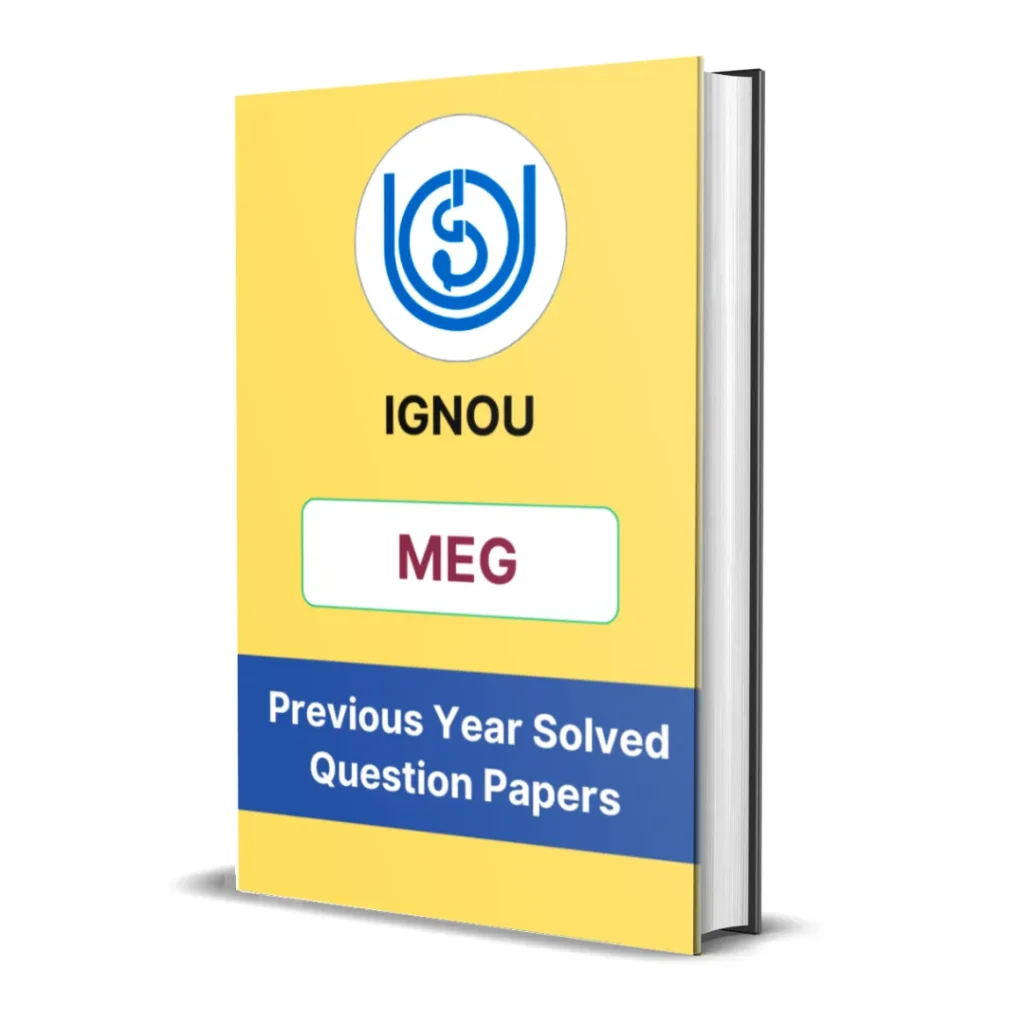IGNOU MEG-05 Block 2 Summary | Classical Criticism
- Last Updated On August 14, 2025
Table of Contents
Here you will get the detailed summary of IGNOU MEG 5 Block 2 – Classical Criticism.
We have provided the summary of all units starting from unit 1 to unit 6.

Introduction
IGNOU MEG-5 Block 2 focuses on Classical Criticism, explores the foundational principles of Western literary theory as developed by the ancient Greek philosophers, especially Plato and Aristotle. These classical critics laid the groundwork for virtually all subsequent literary theory, addressing core concerns such as imitation, the purpose of art, and the structure of literary genres—particularly tragedy. This block not only introduces learners to the defining features of classical aesthetics but also demonstrates how criticism evolved through philosophical dialogue and systematic analysis. It encourages readers to understand literature not only as a creative act but as an object of philosophical inquiry, moral concern, and formal structure.

Unit 1 – Features of Classical Criticism
This unit introduces the essential characteristics of classical literary criticism, focusing on Greek and Roman traditions that emerged between the 5th century BCE and 1st century CE.
Key features include:
-
Mimesis (imitation) as the central concept in art and literature.
-
A didactic purpose—classical literature was expected to teach morality or philosophical truths.
-
A normative approach—critics set rules or standards for literature based on reason, ethics, and social responsibility.
-
Focus on genre classification, especially the distinction between epic, tragedy, and comedy.
-
The use of reason, harmony, and order as guiding principles for evaluating art.
The unit also introduces some important classical critics:
-
Plato – moral philosopher who viewed poetry with suspicion.
-
Aristotle – offered a more structured, appreciative view of literature.
-
Horace and Longinus – Roman critics who emphasized decorum and sublimity, respectively.
This unit sets the stage for the detailed discussions on Plato and Aristotle in the following units.

Unit 2 – Plato on Imitation and Art
Plato’s ideas on art and literature are primarily found in his dialogues such as The Republic, Ion, and Phaedrus. He viewed poetry and drama with suspicion due to their imitative (mimetic) nature.
Key arguments by Plato:
-
Imitation is thrice removed from truth: Reality (Ideas/Forms) → Objects → Art.
-
Poets imitate appearances, not truth, and thus mislead the audience.
-
Emotional appeal in poetry can undermine rational thought and moral order.
-
Poetry should be regulated or banned in an ideal Republic to protect citizens from irrational influences.
However, Plato was not entirely dismissive of all forms of art. In his later works, he acknowledges the divine inspiration of poets and hints at the potential for philosophical poetry.
This unit highlights Plato’s role in shaping early debates about the ethics of literature, the role of the artist, and the nature of representation.
Unit 3 – Aristotle’s Theory of Imitation
Aristotle, Plato’s student, presented a more balanced and appreciative approach to imitation in literature. His views are primarily outlined in the Poetics, where he defines mimesis as a natural human activity and a means of learning.
Aristotle’s key contributions on imitation:
-
Imitation is natural and pleasurable to humans.
-
Unlike Plato, he argues that art can represent universal truths, not just illusions.
-
Poetry is more philosophical than history because it deals with universals (what could or should happen), while history deals with particulars (what actually happened).
-
He categorizes genres based on medium, object, and manner of imitation.
For Aristotle, imitation is a creative, intellectual activity that allows for emotional and moral engagement. His views laid the groundwork for literary analysis based on form, function, and impact.

Unit 4 – Aristotle’s Theory of Tragedy – I
This unit focuses on Aristotle’s analysis of tragedy, a genre he highly valued in Poetics. He defines tragedy as the imitation of an action that is serious, complete, and of a certain magnitude.
Core elements of Aristotle’s tragic theory include:
-
Six parts of tragedy:
-
Plot (mythos)
-
Character (ethos)
-
Thought (dianoia)
-
Diction (lexis)
-
Melody (melos)
-
Spectacle (opsis)
-
-
Plot is the soul of tragedy – it should have unity, coherence, and a logical sequence.
-
The best tragic plots involve a reversal (peripeteia) and recognition (anagnorisis), leading to catharsis, or the purgation of pity and fear.
This unit emphasizes how tragedy serves an emotional and moral function, offering both aesthetic pleasure and ethical insight.
Unit 5 – Aristotle’s Theory of Tragedy – II
Continuing from the previous unit, this section delves deeper into plot structure and tragic character in Aristotle’s theory.
Key concepts elaborated:
-
The tragic hero must be:
-
Noble or high-born
-
Neither wholly good nor wholly evil
-
Possess a tragic flaw (hamartia) that leads to downfall
-
-
The best tragedies evoke pity and fear by showing the downfall of a good person due to error, not vice.
-
Simple vs. Complex plots:
-
Complex plots involve reversal and recognition, while simple ones do not.
-
-
Catharsis is central—it offers emotional cleansing and contributes to audience insight and understanding.
This unit cements Aristotle’s legacy as a systematic theorist of drama and offers students a model of literary analysis that remains influential even today.
Unit 6 – Criticism as Dialogue
This final unit in the block introduces the idea that classical criticism is best understood as an ongoing dialogue rather than a fixed doctrine.
Highlights of this unit:
-
Plato and Aristotle, despite their differences, are engaged in a philosophical conversation on art and ethics.
-
Later critics like Horace (advocated for balance, utility, and decorum) and Longinus (focused on sublimity and emotional grandeur) further developed classical ideas.
-
Classical criticism is not a monolithic body of rules but a dynamic field of debate and reasoning.
The unit encourages students to view criticism not as dogma but as an open-ended intellectual engagement—a conversation between texts, thinkers, cultures, and eras.